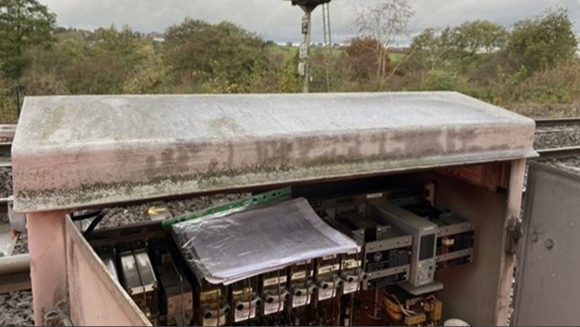
The chief inspector of rail accidents says a near miss due to poor signal maintenance had “echoes” of the fatal crash at Clapham Junction in 1988 which killed 35 people.
The incident happened on the morning of 26 October 2022, when a train travelling between Derby and Chesterfield unexpectedly encountered a signal displaying a red (stop) aspect.
The previous signal had displayed a green (proceed) aspect. As the train was travelling at 100mph, it was unable to stop before the red signal and passed it by about 760m.
The train’s driver called the signaller straight away to report the incident. About 17 minutes later, the following train approached the signal which was now displaying a yellow (caution) aspect.
After passing the signal, while travelling at about 20mph, the driver of the second train saw the taillights of the stationary first train ahead of it and braked to a controlled stop.
The second train stopped about 75 metres from the rear of the first, with both trains now in the same signal section. There were no significant consequences and both trains were able to continue their journeys after obtaining permission from the signaller.
Problems with the wiring
The wrong signal had been displayed due to a fault being introduced in the signalling system’s wiring and then not being detected by testing after work on the system had been undertaken.
RAIB said that testing was affected by a combination of time pressure, tester workload and possibly unfamiliarity with the configuration of the signalling equipment.
The safety watchdog noted that the potential for a collision between the two trains was reduced by the actions taken by the signallers at East Midlands Control Centre and the second train driver.
The report also included a series of recommendations addressed to Network Rail and the civil engineering contractors and recruitment agencies involved in the rail operations.
‘Echoes’ of other accidents
Chief inspector of rail incidents, Andrew Hall, said: “The incident at Wingfield has echoes of the tragic accident at Clapham Junction nearly 35 years ago. Even more worryingly, perhaps, it also has echoes of a more recent collision at Waterloo in 2017 and a derailment at Dalwhinnie in 2021.
“The railway implemented very significant changes to processes around the installation, maintenance and testing of signalling systems after the accident at Clapham. The importance of following these established processes to maintain the safety integrity of the signalling system, and the potential for unsafe events to occur when they are not followed, is once again shown by the events at Wingfield.”
Comments
Comments are closed.












IIUC, the RAIB has no enforcement powers; it is only able to make recommendations? This is a matter of safety, potentially life and death.
This is entirely a matter of technology. The rail industry chooses to live in the past, hurling vehicles weighing hundreds of tons at speeds at which they cannot be stopped on the proverbial sixpence. Basic physics tells anyone with the will to look that there are all sorts of ways to get people and goods around on reserved rights of way, at speed, without either the mega fauna that is rail vehicles, or the mega expense that is rail and its control systems.
The problem is that the industry is unable and unwilling to change, and when things go wrong, wants another layer of technology added to prop up the one that has failed.
And, of course, wants someone else to pay for it.
Owen Jordan.